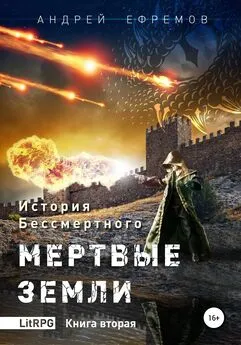Андрей Журавлёв - Сотворение Земли. Как живые организмы создали наш мир
- Название:Сотворение Земли. Как живые организмы создали наш мир
- Автор:
- Жанр:
- Издательство:Альпина нон-фикшн
- Год:2018
- Город:Москва
- ISBN:978-5-9614-5294-5
- Рейтинг:
- Избранное:Добавить в избранное
-
Отзывы:
-
Ваша оценка:
Андрей Журавлёв - Сотворение Земли. Как живые организмы создали наш мир краткое содержание
О том, как формировалась наша планета — такая, какой мы ее знаем, — книга Андрея Журавлева, палеонтолога, доктора биологических наук, профессора кафедры биологической эволюции биологического факультета МГУ.
Сотворение Земли. Как живые организмы создали наш мир - читать онлайн бесплатно ознакомительный отрывок
Интервал:
Закладка:
Избранная библиография
Амосов Р. А., Васин С. Л. Золотые микрофоссилии // Руды и металлы. 1993. № 36. С. 101–7.
Герман Т. Н. Органический мир миллиард лет назад. — Л.: Наука, 1990.
Герман Т. Н., Подковыров В. Н. Находки рифейских гетеротрофов в лахандинской серии Сибири // Палеонтологический журнал. 2010. № 4. С. 5–23.
Заварзин Г. А. Лекции по природоведческой микробиологии. — М.: Наука, 2003.
Заварзин Г. А. Эволюция прокариотной биосферы: Микробы в круговороте жизни. 120 лет спустя: Чтение им. С. Н. Виноградского. — М.: МАКС Пресс, 2011.
Козо-Полянский Б. М. Новый принцип биологии: очерк теории симбиогенеза. — Л.-М.: Пучина, 1924.
Мережковский К. С. Теория двух плазм как основа симбиогенезиса, нового учения о происхождении организмов. — Казань: типография Императорского ун-та, 1908.
Петров П. Ю. Микробные маты как источник карбонатных осадков в позднем докембрии; свита линок, средний рифей Туруханского поднятия Сибири // Литология и полезные ископаемые. 2001. № 2. С. 191–215.
Семихатов М. А., Раабен М. Е. Динамика глобального разнообразия строматолитов протерозоя. Ст. 2: Африка, Австралия, Северная Америка и общий синтез // Стратиграфия. Геологическая корреляция. 1996. № 1. С. 26–54.
Семихатов М. А., Серебряков С. Н. Сибирский гипостратотип рифея. — М.: Наука, 1983. (Тр. ГИН АН СССР. Вып. 367.)
Тимофеев Б. В. Древнепалеозойские отложения в Молдавии // Доклады АН СССР. 1952. Т. 36. № 6. С. 1207–9.
Фаминцын А. С. О роли симбиоза в эволюции организмов // Записки Императорской академии наук по физико-математическому отделению. Сер. VIII. Т. ХХ. 1907. № 3. С. 1–14.
Школьник Э. Л., Жегалло Е. А., Герасименко Л. М., Шувалова Ю. В. Углеродистые породы и золото в них бассейна Витватерсранд, ЮАР, — исследование с помощью электронного микроскопа. — М.: Эслан, 2005.
Adams K. A. et al. 2012. Optical reflectivity of solid and liquid methane: Application to spectroscopy of Titan’s hydrocarbon lakes // Geophysical Research Letters, 39, L04309. DOI: 10.1029/2011GL049710
Agić H., Moczydłowska M., Yin L. 2015. Affinity, life cycle, and intracellular complexity of organic-walled microfossils from the Mesoproterozoic of Shanxi, China // Journal of Paleontology, 89, 28–50.
Aulbach S., Stagno V. 2016. Evidence for a reducing Archean ambient mantle and its effects on the carbon cycle // Geology , 44, 751–4.
Bachan A., Kump L. R. 2015. The rise of oxygen and siderite oxidation during the Lomagundi Event // Proceedings of the National Academy of Sciences of the USA, 112, 6562–7.
Bao H., Lyons J. R., Zhou C. 2008. Triple oxygen isotope evidence for elevated CO 2levels after a Neoproterozoic glaciation // Nature , 453, 504–6.
Barboni M. et al. 2017. Early formation of the Moon 4.51 billion years ago // Science Advances , DOI: 10.1126/sciadv.1602365
Bekker A. et al. 2010. Iron formation: The sedimentary product of a complex interplay among mantle, tectonic, oceanic, and biospheric processes // Economic Geology , 105, 467–508.
Bengtson S., ed. 1994. Early Life on Earth. New York: Columbia Univ. Press, 630 p. ( Nobel Symposium , 84.)
Bengtson S. et al. 2017. Fungus-like mycelia fossils in 2.4-billion-year-old vesicular basalts // Nature Ecology & Evolution , 1, 0141. DOI: 10.1038/s41559-017-0141
Bernard S., Papineau D. 2014. Graphitic carbons and biosignatures // Elements , 10, 435–40.
Bosak T., Liang B., Sim M. S., Petroff A. P. 2009. Morphological record of oxygenic photosynthesis in conical stromatolites // Proceedings of the National Academy of Sciences of the USA, 106, 10939–43.
Bosak T., Macdonald F., Lahr D., Matys E. 2011. Putative Cryogenian ciliates from Mongolia // Geology , 39, 1123–6.
Bose P. K. et al. 2012. Sedimentation patterns during the Precambrian: A unique record? // Marine and Petroleum Geology, 33, 34–68.
Bouvier A., Wadhwa M. 2010. The age of the Solar System redefined by the oldest Pb-Pb age of a meteoritic inclusion // Nature Geoscience , 3, 637–41.
Brasier M. D., Antcliffe J., Saunders M., Wacey D. 2015. Changing the picture of Earth’s earliest fossils (3.5–1.9 Ga) with new approaches and new discoveries // Proceedings of the National Academy of Sciences of the USA, 112, 4859–64.
Brocks J. J. et al. 2017. The rise of algae in Cryogenian oceans and the emergence of animals // Nature , 548, 578–81.
Brush S. G. 1989. The age of the Earth in the twentieth century // Earth Sciences History , 8 (2), 170–82.
Butterfield N. J. 2009. Modes of pre-Ediacaran multicellularity // Precambrian Research, 173, 201–11.
Butterfield N. J. 2015. Early evolution of the Eukaryota // Palaeontology , 58, 5–17.
Claire M. W. et al. 2014. Modeling the signature of sulfur mass-independent fractionation produced in the Archean atmosphere // Geochimica & Cosmochimica Acta , 141, 365–80.
Cockell C. S., Kelly L. C., Marteinsson V. 2013. Actinobacteria — An ancient phylum active in volcanic rock weathering // Geomicrobiology Journal , 30, 706–20.
Cohen P. A., Macdonald F. A. 2015. The Proterozoic record of eukaryotes // Paleobiology , 41, 610–32.
Cohen P. A., Schopf J. W., Butterfield N. J., Kudryavtsev A. B., Macdonald F. A. 2011. Phosphate biomineralization in mid-Neoproterozoic protists // Geology , 39, 539–42.
Coughenour L. C., Archer A. W., Lacovara J. K. 2013. Calculating Earth-Moon system parameters from sub-yearly tidal deposit records: An example from the carboniferous tradewater formation // Sedimentary Geology , 295, 67–76.
Dalrymple G. B. 1994. The Age of the Earth. Stanford: Stanford Univ. Press, 474 p.
Darwin C. 1871. Darwin Correspondence Project. «Letter No. 7471». http://www.darwinproject.ac.uk/Letter/DCPLETT7471.xml
Darwin G. H. 1879. On the precession of a viscous spheroid and the remote history of the Earth // Philosophical Transactions of the Royal Society of London , 170, 447–530.
Dickin A. P. 2005. Radiogenic Isotope Geology, 2nd ed. Cambridge: Cambridge Univ. Press, 492 p.
Dodd M. S. et al. 2017. Evidence for early life in Earth’s oldest hydrothermal vent precipitates // Nature , 543, 60–4.
Embley T. M., Martin W. 2006. Eukaryotic evolution, changes and challenges // Nature , 440, 623–30.
Eriksson P. G., Catuneanu O., Sarkar S., Tirsgaard H. 2005. Patterns of sedimentation in the Precambrian // Sedimentary Geology, 176, 17–42.
Falcón L. I., Magallon S., Castillo A. 2012. Dating the cyanobacterial ancestor of the chloroplast // The ISME Journal , 4, 777–83.
Fedonkin M. A., Yochelson E L. 2002. Middle Proterozoic (1.5 Ga) Horodyskia moniliformis Yochelson and Fedonkin, the oldest known tissue-grade colonial eukaryote // Smithsonian Contributions to Paleobiology , 94, 1–29.
Ferla M. P., Thrash J. C., Giovannoni S. J., Patrick W. M. 2013. New rRNA gene-based phylogenies of the Alphaproteobacteria provide perspective on major groups, mitochondrial ancestry and phylogenetic instability // PLoS ONE, 8 (12), e83383. DOI: 10.1371/journal.pone.0083383
Fischer W. W., Knoll A. H. 2009. An iron shuttle for deepwater silica in Late Archean and early Paleoproterozoic iron formation // Geological Society of America Bulletin , 121, 222–35.
Fralich P., Carter J. E. 2011. Neoarchean deep marine temperature: Evidence from turbidite successions // Precambrian Research, 191, 78–84.
Gaidos E. J., Güdel M., Blake G. A. 2000. The faint young Sun paradox: An observational test of an alternative solar model // Geophysical Research Letters , 27, 501–3.
Gaucher E. A., Govindarajan S., Ganesh O. K. 2008. Palaeotemperature trend for Precambrian life inferred from resurrected proteins // Nature , 451, 704–7.
Geldsetzer H. H. J., James N. P., Tebbutt E., eds. 1989. Reefs, Canada and Adjacent Area // Memoir of the Canadian Society of Petroleum Geologists, 13, 775 p.
Geer G. de. 1912. A geochronology of the last 12,000 years // International Geological Congress, 11th, Stockholm, 1910, Report , 1, 241–53.
Gradstein F. M., Ogg J. G., Schmitz M. D., Ogg G. M., eds. 2012. The Geologic Time Scale 2012. V. 1. Amsterdam: Elsevier, 1144 p.
Grosch E. G., Hazen R. M. 2015. Microbes, mineral evolution, and the rise of microcontinents — Origin and coevolution of life with early Earth // Astrobiology , 15 (10). DOI: 10.1089/ast.2015.1302
Grotzinger J. P., Kasting J. F. 1993. New constraints on Precambrian ocean composition // The Journal of Geology , 101, 235–43.
Grotzinger J. P., Knoll A. H. 1999. Stromatolites in Precambrian carbonates: Evolutionary mileposts or environmental dipsticks? // Annual Review of Earth and Planetary Sciences, 27, 313–58.
Gumsley A. P. et al. 2017. Timing and tempo of the Great Oxidation Event // Proceedings of the National Academy of Sciences of the USA, 114, 1811–6.
Habicht K. S., Gade M., Thamdrup B., Berg P., Canfield D. E. 2002. Calibration of sulphate levels in the Archean ocean // Science , 298, 2372–4.
Hallbauer D. K. 1978. Witwatersrand gold deposits. Their genesis in the light of morphological studies // Gold Bulletin , 11 (1), 18–23.
Halverson G. P. et al. 2005. Towards a Neoproterozoic composite carbon-isotope record // Geological Society of America Bulletin , 117, 1181–207.
Hao J., Sverjensky D. A., Hazen R. M. 2017. A model for late Archean chemical weathering and world average river water // Earth and Planetary Science Letters. DOI: 10.1016/j.epsl.2016.10.021.
Читать дальшеИнтервал:
Закладка:
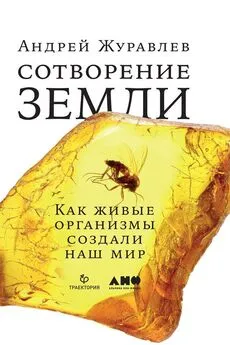

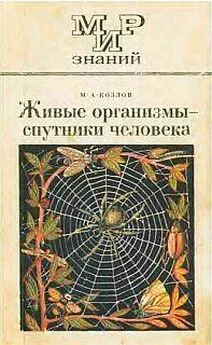
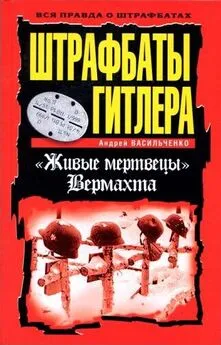
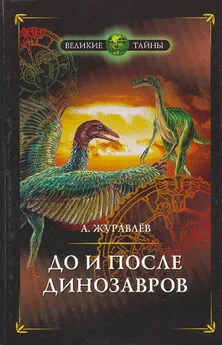
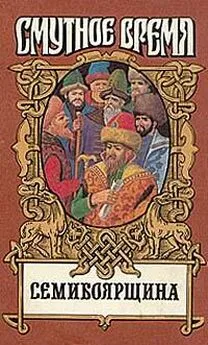
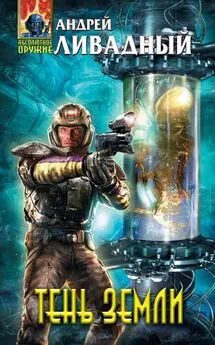
![Андрей Максимов - Самоубийство Земли [Повести и рассказы]](/books/1059571/andrej-maksimov-samoubijstvo-zemli-povesti-i-rass.webp)
